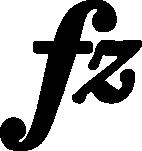



The  mark in AI is clearly valid from the beginning of the bar. In turn,
mark in AI is clearly valid from the beginning of the bar. In turn,  in FE (→GE,EE2), apart from the literal reading, can be interpreted in several ways, e.g., as
in FE (→GE,EE2), apart from the literal reading, can be interpreted in several ways, e.g., as  valid in this place or – which is more plausible – as
valid in this place or – which is more plausible – as  valid from the beginning of the bar. In the main text we propose the latter, being the resultant of both source notations (Cf. also analogous bar 62).
valid from the beginning of the bar. In the main text we propose the latter, being the resultant of both source notations (Cf. also analogous bar 62).
In EE3 (→EE4) an arbitrary  was added to
was added to  adopted from FE (near the end of the bar), probably on the basis of comparison with bar 62.
adopted from FE (near the end of the bar), probably on the basis of comparison with bar 62.
Compare the passage in the sources »
category imprint: Interpretations within context; Differences between sources; Editorial revisions
issues: EE revisions, Centrally placed marks
notation: Verbal indications






